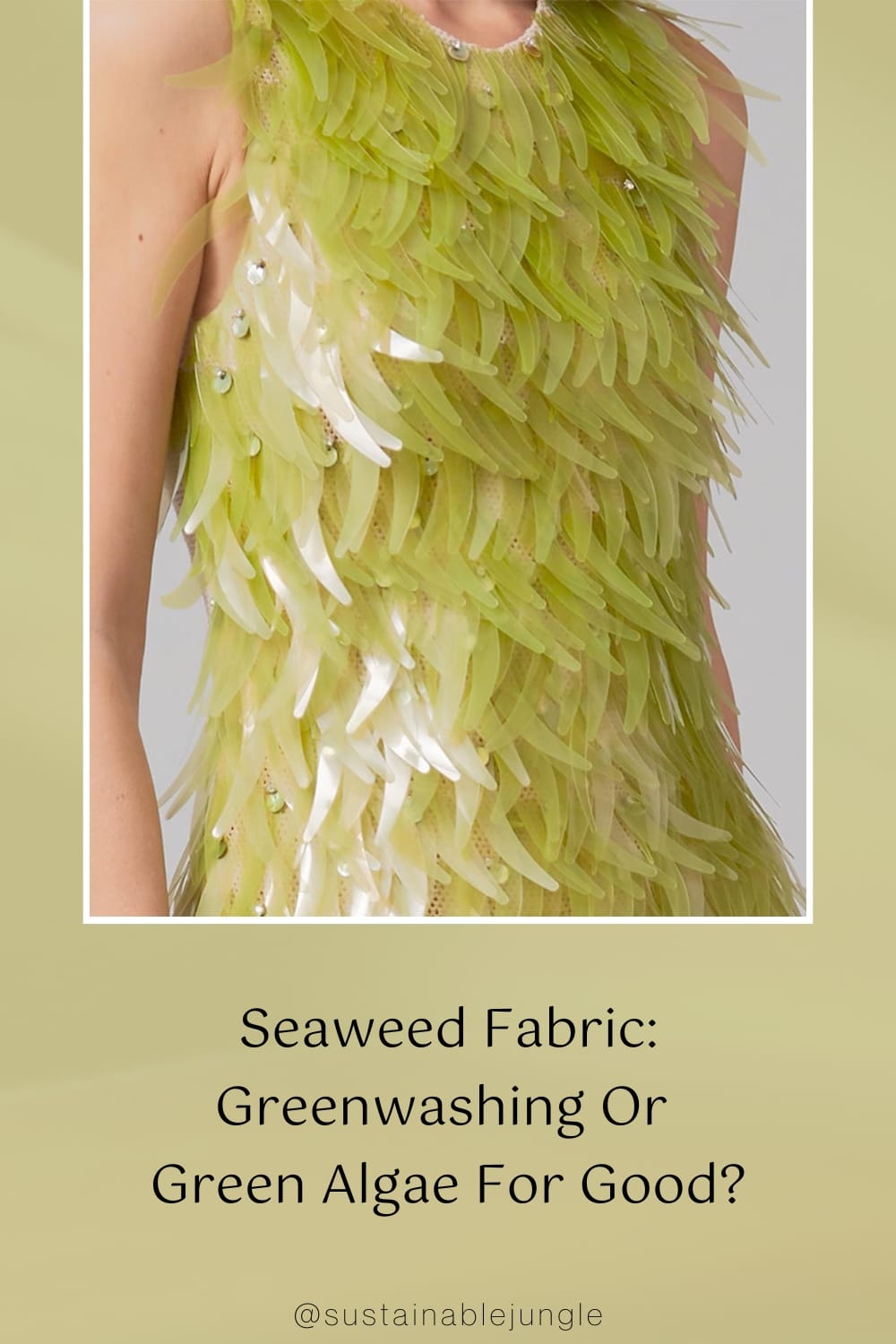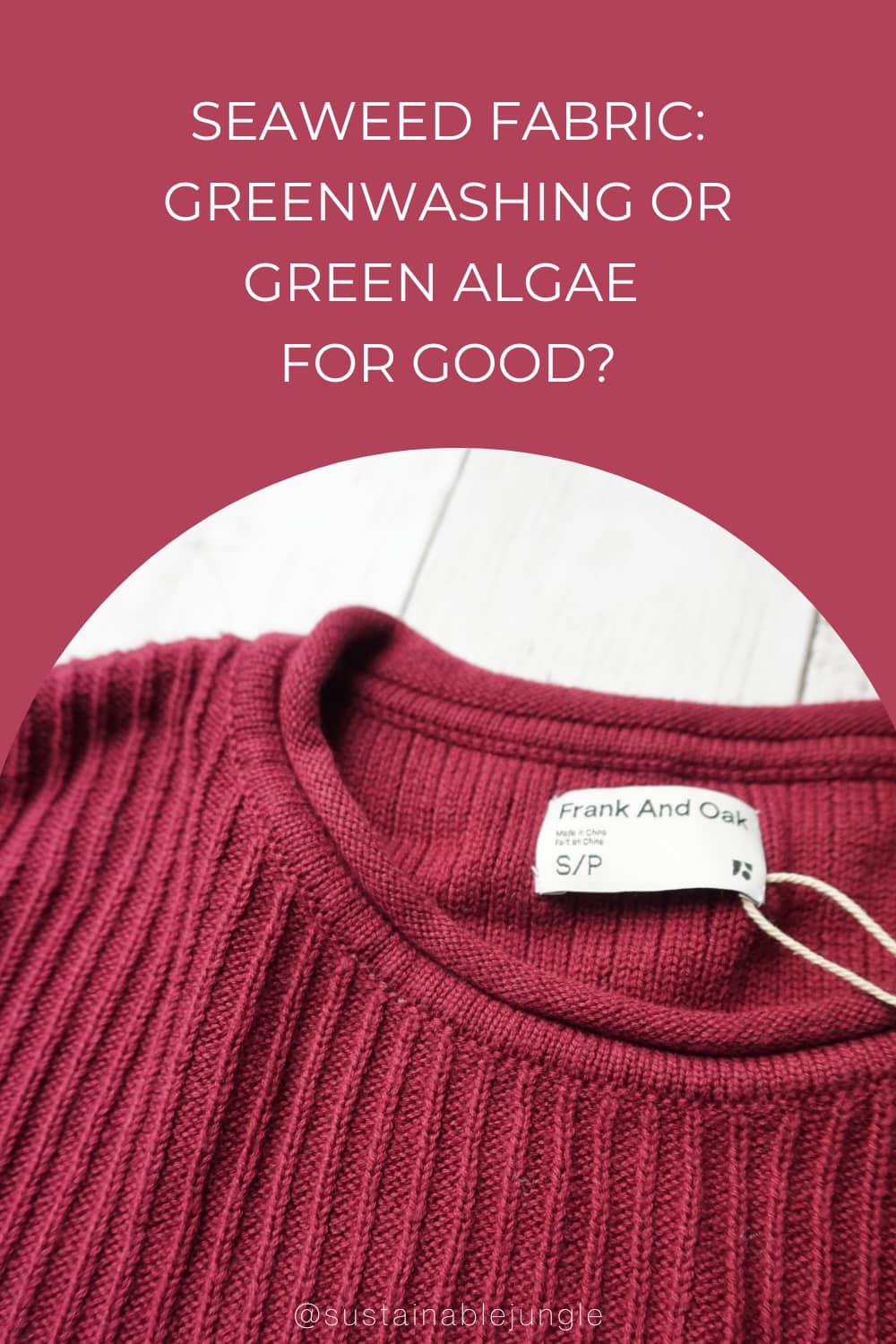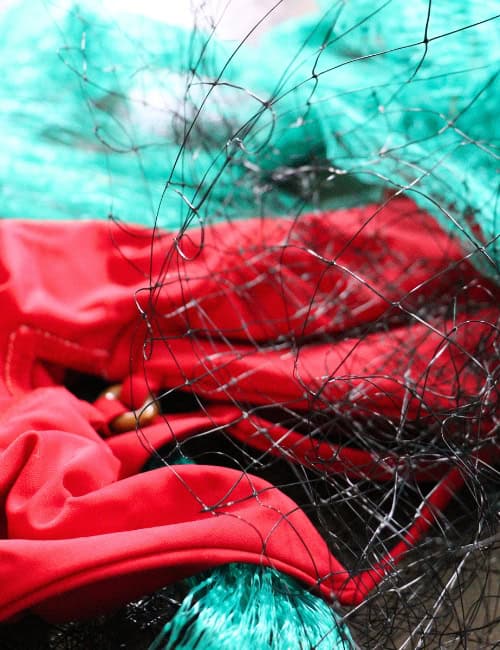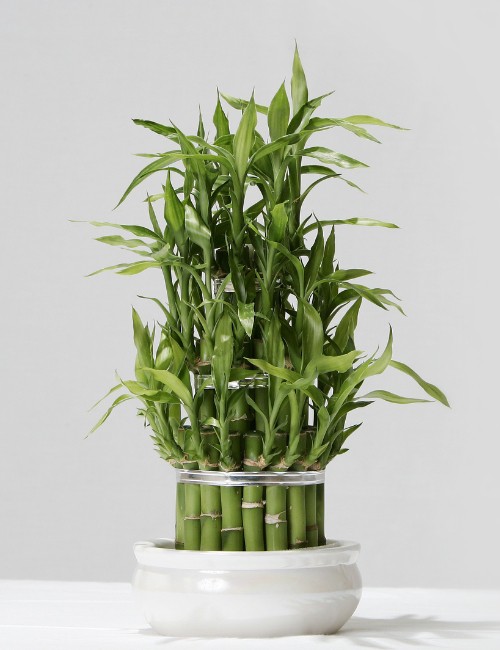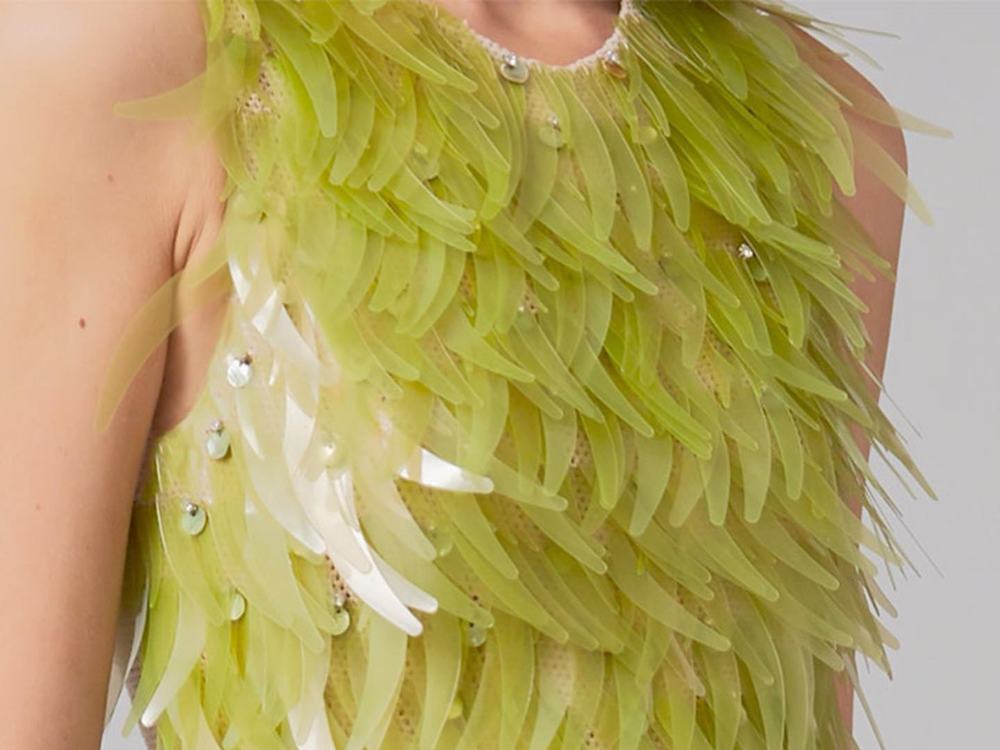
Seaweed Fabric: Greenwashing Or Green Algae For Good?
Can you make clothes from seaweed?
You sure can. Saltwater seaweed is having a sustainable sartorial moment, and we’re happy as a clam for it.
After all, seaweed is one of our planet’s most essential substances, as one of the most enduring and abundant species, dating back more than one billion years.
Loaded with essential substances like trace elements, amino acids, minerals, antioxidants, and vitamins, humans have harvested it for thousands of years for everything from medicine and food to fertilizer, fuel, and skincare.
In the 1600s, Japanese textile makers were already using seaweed fabric to fortify clothing, and in Ancient Rome, it was used to dress wounds.
Thanks to new technologies, the ancient marine plant is now being used for further innovation, like bio-based skis and wearable textiles.
The New York Times recently announced that seaweed is ‘Having Its Moment In the Sun’ as an increasingly common sustainable, regenerative, natural product.
In fact, the demand for fabric made from seaweed is off the charts, with global production increasing by 75% in just ten years.
Let’s deep dive into the world of kelp fabric to learn about its sustainability, manufacturing process, and applications
1. What Is Fabric From Seaweed?
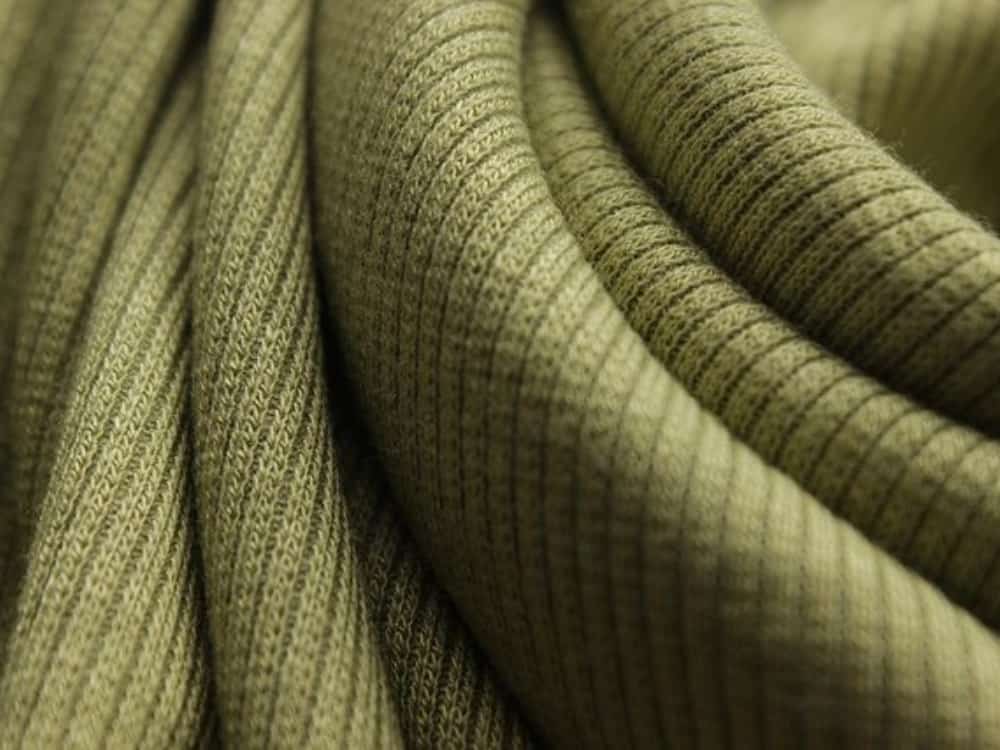
As we’ve explored with the marine-based sustainable material fish skin leather, the crossover between sustainable fashion and food is becoming more commonplace.
Seaweed, also known as kelp, has long been linked to both sustainability and health benefits, thanks to its nutrient-density and abundance in our oceans.
Iron, calcium, iodine, vitamins A,C, E, B12, plus antimicrobial and anti-inflammatory properties and an anti-oxidative capacity make it a rich resource for our wellbeing.
While its cultural roots were mostly as a diet staple in Asia since prehistoric times, modern uses of seaweed for fabric can be traced back to the early twentieth century.
The first modern record of seaweed fabric was during World War I, when war manufacturers experimented with different materials to fortify fabric for soldiers, nurses, and other war endeavors.
Today, the fabric is a little more paci-fish-t, with its development a viable alternative to fossil fuel-based synthetic fabrics like polyester and nylon, which shockingly make up 60% of all clothes.
The fabric was first developed in 2001 by Florida-based Nanonic, but only recently began to flourish in popularity as a sustainable fabric.
But how does it work? Is seaweed a fiber? And what is clothing made from kelp?
What Is Seaweed Fabric Made Out Of?
First, note that kelp fabric is not purely seaweed.
It’s a semisynthetic fabric that’s produced by spinning the natural cellulose of beech or eucalyptus trees and seaweed together with special machines to create a soft, stretchy, durable fabric yarn that can be used to weave fabrics.
Beech and eucalyptus trees—the same things used to make modal fabric and lyocell fabric, respectively—are known for their regenerative properties and remain usable post-harvest, meaning they can be sourced again.
Tree cellulose is just part of aqua-tion, the other half of course being seaweed, another sustainable resource. The seaweed used for fabric is usually brown Knotted Wrack from Iceland, although some reports also mention Horsetail kelp or Sargassum.
The resulting fabric woven from seaweed is biodegradable, absorbent, soft, and breathable.
While seaweed on its own is not a fiber, kelp fabric is an emergent eco-friendly textile used mostly as a wool or cotton alternative, which is predominantly developed and sold by the seaweed fabric supplier SeaCell.
Today, a number of brands are using SeaCell to craft seaweed clothes— but what is SeaCell fabric?
According to SeaCell’s most notable manufacturer, German-based Smartfiber AG,
“The SEACELL fiber is the best of both worlds in that it is the combination of an extremely comfortable, eco-friendly fiber with positive effects on both the body and mind.”
Says Smartfiber, the fiber is:
- Nourishing and revitalizing for the wearer’s skin
- Eco-friendly and natural
- Rich in vitamins, minerals, and antioxidants
- Compostable and biodegradable
- Moisture-regulating
- Greatest level of comfort
SeaCell seaweed fabric is 19% seaweed, 81% Lyocell, and bears sustainability certifications from EU Ecolabel, OEKO-TEX, TUV Austria for composting, and TITK.
Its manufacturing process also won European Business Awards “Process Innovation” under the Environment category.
While use of the fabric isn’t exactly mainstream (yet), brands like lululemon have used it for nearly two decades, even in spite of controversies around the legitimacy of the fabric’s claims more than fifteen years ago.
We’ll fish around that scandal later.
2. What Is Fabric Made From Seaweed Used For?
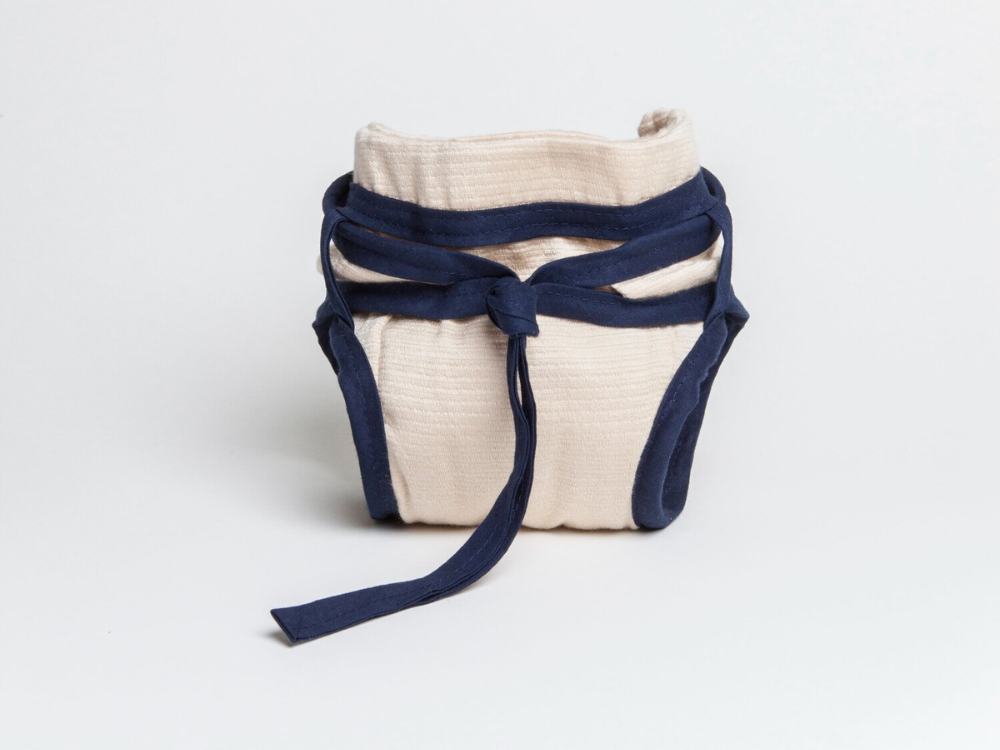
Seaweed fabric is used primarily in sustainable activewear and sustainable loungewear, but is also finding its way into mattresses, home textiles like bedding and towels, and more ethical cashmere sweaters.
Many brands adopting the fabric swear by its antimicrobial agent and ability to reduce free radicals and harmful trace elements—although not enough evidence exists to confirm those claims.
Baby clothes and undergarments are also made from the fabric, since it is breathable, soft, lightweight, and moisture-wicking.
There was even a revolutionary reusable diaper called ‘Sumo’ made entirely of SeaCell fabric, designed by Luisa Kahlfeldt.
Additionally, SeaCell fabric can be used for safety clothing, uniforms, and couture garments.
Why Is Seaweed Fabric Good?
The following are the main beneficial qualities of seaweed fabric:
Anti-Irritant: SeaCell fibers are smoother and silkier than wool or cotton, and won’t irritate sensitive skin. SeaCell clothing also moves moisture away from your body, preventing bacteria growth.
Breathability: Like any semisynthetic from the viscose fabric family, its’ 50% more breathable than cotton and is ideal for summer and workout clothing.
Moisture-Wicking: SeaCell manages to retain 85% of its dryness in wet conditions. This keeps you warm in the cool and cool in the heat.
Sun Protection: The natural minerals present in the seaweed protect against the sun up to UPF +50. Apparently, the textile eliminates free radicals, which can damage our skin cells.
Durability: SeaCell is 2x stronger than cotton and viscose while dry and 3x stronger when wet. This means you can machine wash your seaweed fiber clothing repeatedly without them losing shape or durability.
The fabric is also useful because it’s easy to care for; it’s machine washable at 30°C or colder, but does not respond well to bleach, tumble drying, or dry cleaning.
3. How to Make Seaweed Fabric
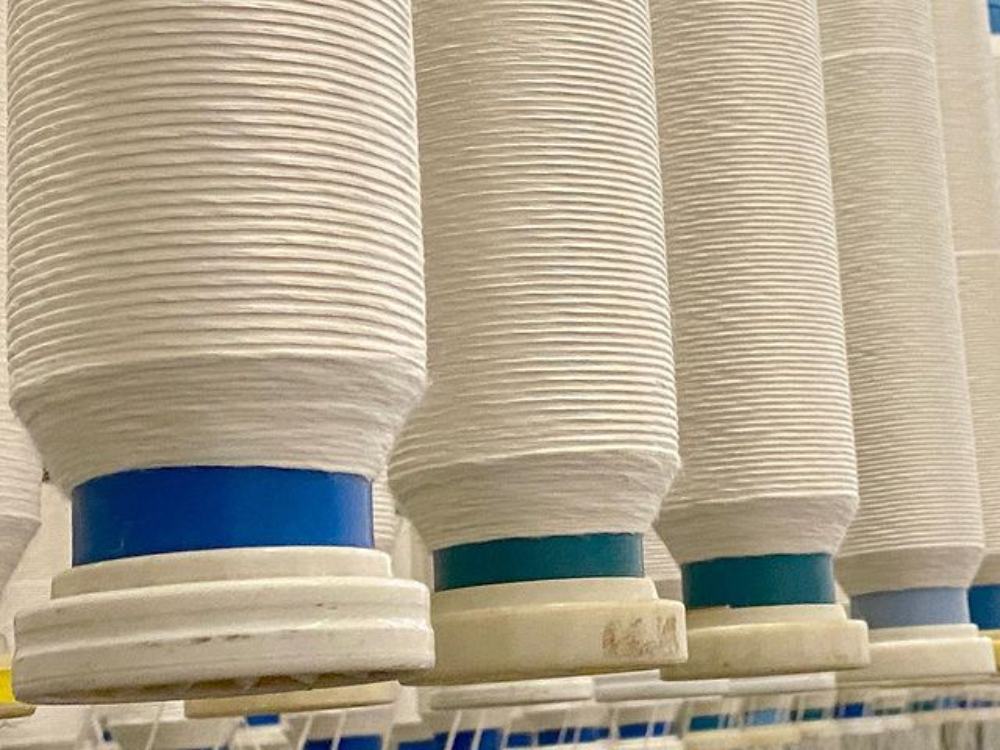
Exactly what is seaweed yarn and how does one even make clothing out of kelp?
There are two important processes behind fabric made from seaweed.
First, the process of harvesting the sustainable raw materials seaweed and cellulose.
Then, spinning the yarn.
Sourcing Seaweed
SeaCell, the most popular kelp textile, is made from lyocell and a type of brown algae called Knotted Wrack, or more formally Ascophyllum nodossum, which is primarily sourced from Icelandic fjords.
The regenerative part of the plant is harvested every four years to minimize environmental impact. Its extraction happens in a way to ensure zero permanent damage to allow it regeneration.
It’s then dried naturally, chopped, and subjected to zero chemical treatments, to ensure its essential substances and trace elements remain.
Processing Seaweed
Next, SeaCell is created via a closed-loop (AKA zero waste) system that recycles about 99% of water and solvents to ensure the fabric is manufactured in a carbon-neutral manner with zero chemicals released.
Thanks to an organic amine oxide solvent-spinning process (recognized by FSC as non-toxic), the cellulose is dissolved.
After the washing and retting process, the special solution is filtered and spun through spinnerets to create the filaments (fine threads) that become the lyocell-and-seaweed yarn.
It’s important to note that seaweed is added to the wood-cellulose lyocell solution, which acts as a “functioning substrate” to the seaweed.
According to Smartfiber AG, SeaCell fabric contains 19% seaweed—the rest being lyocell made from wood pulp harvested from beech and eucalyptus trees.
4. Sustainability Of Seaweed Textiles
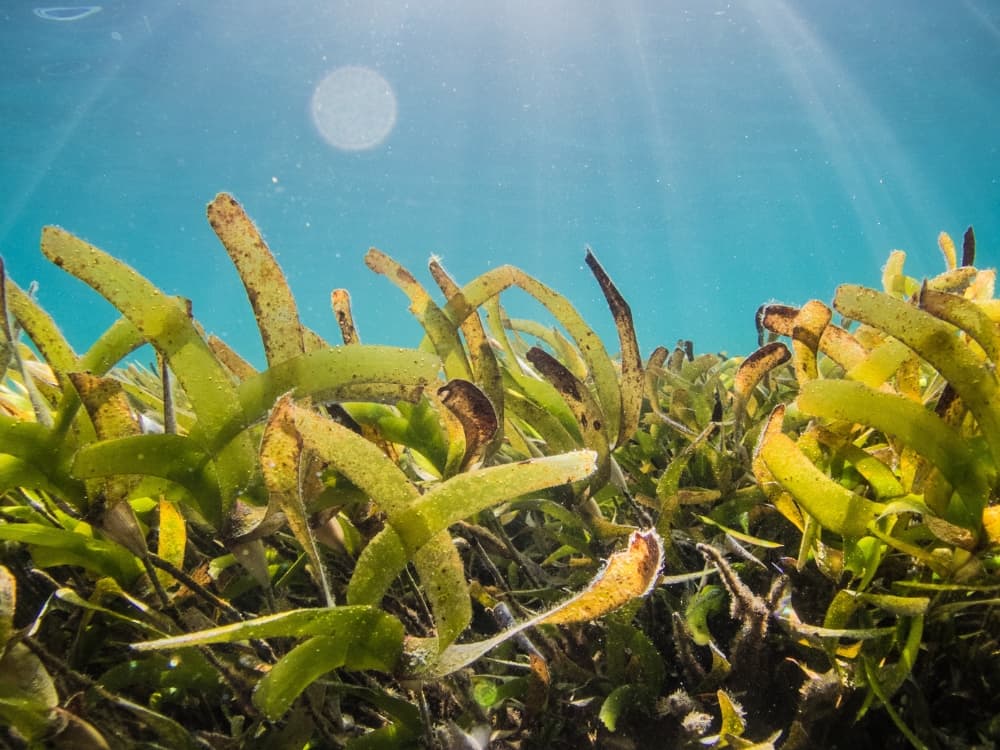
It’s no fanta-sea.
Fabric seaweed meets all the criteria for a sustainable fabric—it biodegrades, it’s renewable, and it’s carbon-neutral while using minimal water and highly regenerative natural resources.
When it comes to the sustainable raw materials harvested, eucalyptus grows more than a meter per year, while certain species of kelp can grow as much as a meter per day.
This means that if harvested properly, producing a material like SeaCell has minimal effect on the plants used. They will regenerate what they lose, and in a short timespan.
These beech and eucalyptus trees aren’t just highly regenerative; they also require a minimal amount of water compared to other plants—eucalyptus requiring just 1/10 of the average tree.
Kelp itself can also keep climate change at bay.
Seaweed requires no freshwater, arable land, or synthetic inputs to grow, and plays a vital role in carbon sequestration by absorbing CO2 during its growth, mitigating ocean acidification.
Additionally, seaweed cultivation can help reduce eutrophication and nutrient pollution (a huge issue due largely to excessive synthetic fertilizer use in the agriculture industry) by absorbing excess nutrients from water, enhancing water quality.
At the fabric production level, there are yet more advantages to clothing made from seaweed lyocell over synthetic fabric, such as:
- A zero waste closed-loop process that means no chemicals released into the environment
- Very little water is used (cotton, for example, takes thousands of liters for just a single t-shirt.)
- 100% non-toxic—in contrast to the harmful processes used to make rayon fabric.
- More energy efficient than other textile manufacturing
- Seaweed fabric clothing is compostable and biodegradable
If that wasn’t enough, seaweed has the potential to replace plastics—and not just clothing, but as plastic bag and film alternatives, too.
This is huge, considering most of today’s garments woven from carbon-heavy and plastic-based threads are a disaster to landfills and oceans, where they release harmful microplastics into our waterways, food chains, the environment, and eventually, our bodies.
5. Seaweed Fabric Controversy

Not to krill your vibe, but we can’t kelp but mention some red flags when it comes to clothing made of seaweed.
Almost two decades ago, Lululemon began using SeaCell. It came under fire after a 2007 New York Times investigation found that the fabric lacked the scientific selling features it claimed, like anti-inflammatory and anti-bacterial properties.
In fact, the NYT couldn’t even confirm traces of seaweed itself in the fabric.
Today, lululemon has a VitaSea line that still carries the fabric, though any medical claims have been removed. Now, the yoga label focuses on the material’s comfort and breathability.
Meanwhile, brands like Leticia Credidio, Pangaia, Vuori, and Smartfiber continue to tout medicinal benefits of the textile, despite no scientific evidence to back these claims.
The regulation of different claims made about sustainability and health benefits of clothing is such an issue in the fashion industry that the EU introduced laws against it in 2022.
But brands selling SeaCell clothing continue to make bold and baseless claims, like:
- SeaCell has an “anti-oxidative capacity eliminates free radicals”
- “SeaCell is known as calming the sympathetic nerve” and helps in “calming emotions and releasing your negative energy”.
- The “fabric structure fosters nutrient transfer”.
- It “absorbs metal ions… through embedded sterilization metal”. (Side note, yes, seaweed itself is known to absorb heavy metals, but there’s no evidence that fabric from seaweed possesses the same ability.)
- Of that its “natural moisture levels enable an active exchange of those restorative substances between the shirt and skin, which can repair cellular damage, reduce inflammation and soothe itchiness”.
While we know that seaweed has incredible health and wound healing properties, we’re not sure a fabric with 81% Lyocell and 19% heavily-processed seaweed powder can really have these effects.
All that greenwashing aside, the sustainability benefits of seaweed fabric are pretty sea-rious—just don’t buy the bunk about its magical wearable health benefits.
6. Where To Buy Seaweed Clothing
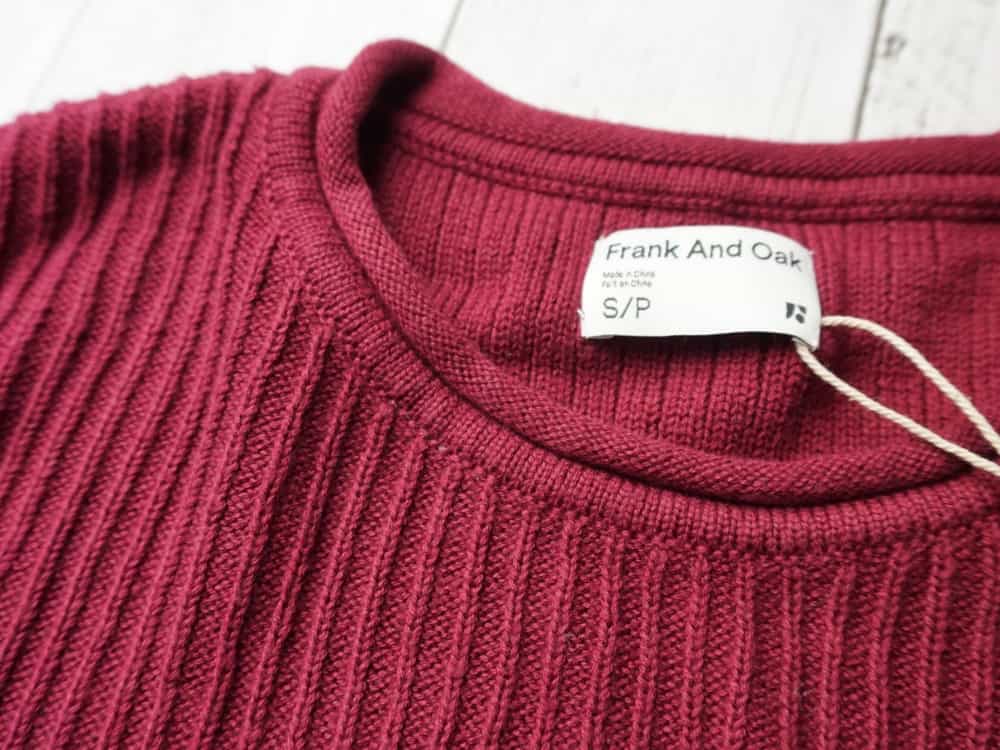
Ready for your sustainable street style to take a dive into sea-faring fabric technology?
Aside from SeaCell, there are a number of players in the seaweed garment game today.
While we won’t confirm their various health benefit claims, we will confirm that seaweed fabric is durable, comfortable, and eco-friendly.
Seaweed Fabric Suppliers
- Kelsun by Keelabs (formerly Algiknit)
- Nanonic SeaCell
- Pangaia C-Fiber (uses Smartfiber SeaCell yarn powder)
- Pyratex SeaCell
- Smartfiber SeaCell
- Vitadylan
Seaweed Clothing Brands
Did you know we Have a Newsletter?
We cover the latest in sustainable living, fashion, zero waste, beauty, travel, finance and more…
Final Thoughts On Seaweed Clothing
Seaweed fabric is nothing to get salty about. Today, the versatile marine algae is a model organism in bio-manufacturing.
And we’ve only swam the surface of kelp’s myriad possibilities.
There’s a bona fide tsunami of potential innovations around seaweed, as it draws new major investments and brings together purpose-driven people from all over the world to anchor sustainable solutions to our world’s environmental issues.
While this bio-based regenerative fabric may not hold up to all the far-fetched health claims, the “humble vegetable” perhaps holds the cure for both sustainable food systems AND the future of sustainable fashion.
So why isn’t seaweed fabric more widespread already?
Large scale production of fabric made with seaweed is not yet available, making it a scarce fabric. That means it’s still pricey and has a long lead time from kelp fabric suppliers.
But the tides are turning in favor of the seaweed industry, which is currently riding a massive wave of interest and money globally.
It’s our sincere hope that the ever-sustainable seaweed fabric buoys and blooms like the magic algae from which it spawns.
To help the process along, give this article a share, so more people can be on the lookout for seaweed clothes that make our world (and their closet) a greener place.
Pin these:
